
(Review archived from August 20, 2018)
Ah … the ubiquitous 6th gen WWII FPS, the genre equivalent of white bread to a console generation that birthed a glut of them. I won’t lie; I put off reviewing Call of Duty: Finest Hour after having beaten it because I couldn’t imagine what I might say about it that couldn’t be applied to half a dozen other games from this time period. But much like Sisyphus and his boulder, it’s time to storm that beach one more time.
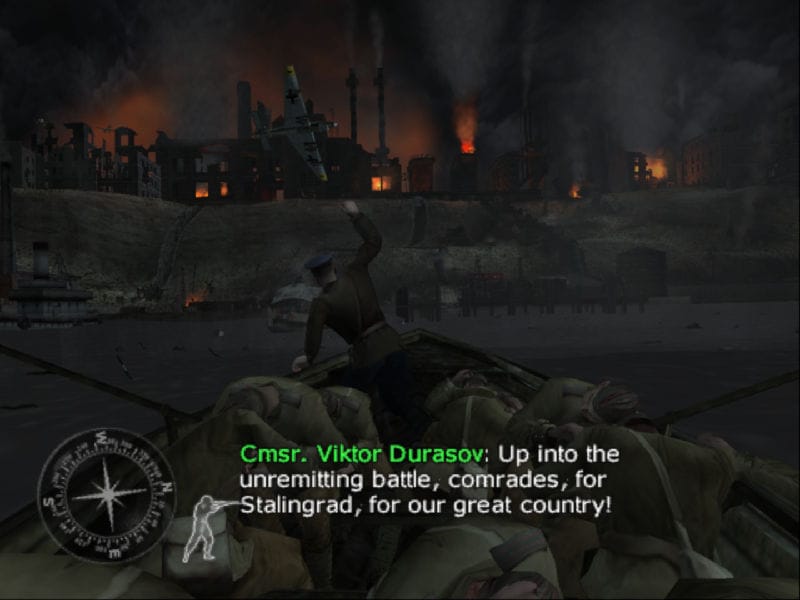
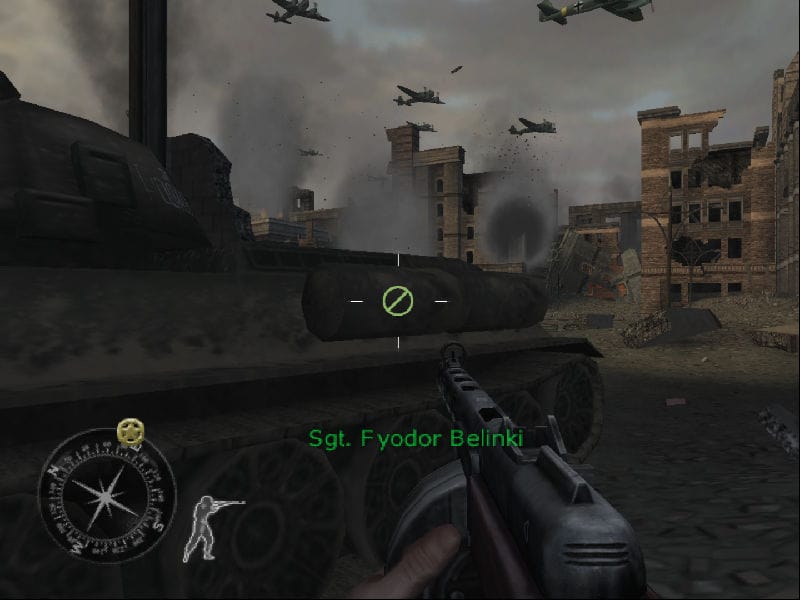
Call of Duty: Finest Hour does in fact have the distinction of being the first CoD game to appear on a home console. The series already had a successful PC release one year prior to Finest Hour, but in many ways it was this title that really brought CoD to the masses, as it were. So how well did the franchise handle its first foray into ‘consolization’? Well … not half bad, though there are certainly concessions present. In order to compensate for some slightly sluggish moment and aiming, it seems that health (and in some cases ammo) drops are more plentiful in Finest Hour than in the previous PC title. Likewise it seems that you can take a bit more damage in Finest Hour. This allows for a bit more of a ‘run and gun’ play style than the first PC title which often required a more tactical and strategic style of play. Interestingly enough though, checkpoints here seem to be considerably more sparse than in the PC title which not only had more frequent checkpoints but allowed for quick saves as well.
Other than a couple of eccentricities, I didn’t have any major issues with the gameplay in Finest Hour. If you’ve played any other halfway competent WWII FPS on a console, Finest Hour will feel likely feel very familiar. The selection of weapons is both familiar and adequate, and you’ll likely settle on some favorites pretty quickly. For this WWII FPS vet, it’s almost always some combination of M1 Garand and MP40. Unfortunately the operation of hand grenades in Finest Hour is a bit … basic. You cannot control the trajectory of your throw, nor can you ‘cook’ your grenades. So it’s simply one press, one throw. I suspect that these gameplay features simply hadn’t been adopted into console FPS at the time of this release, but that’s purely guesswork on my part. These elements are certainly noticeable in their absence though, particularly in hindsight.
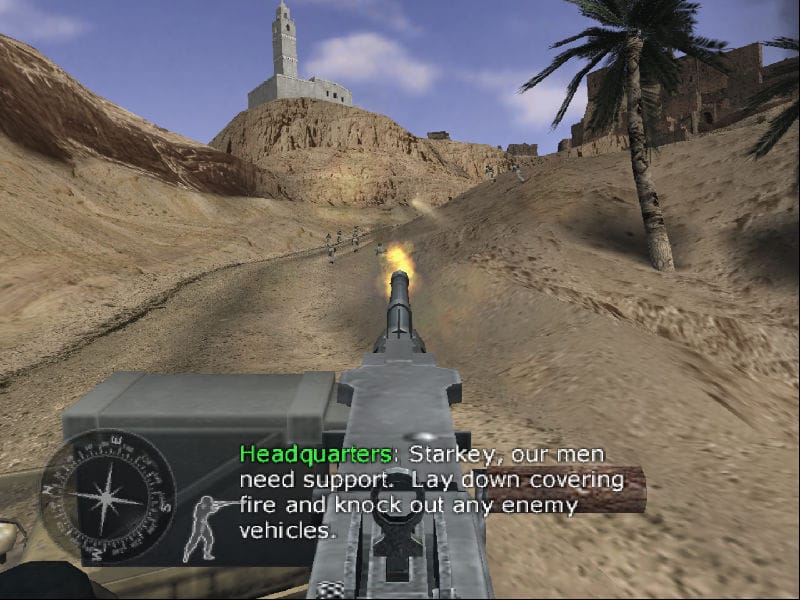
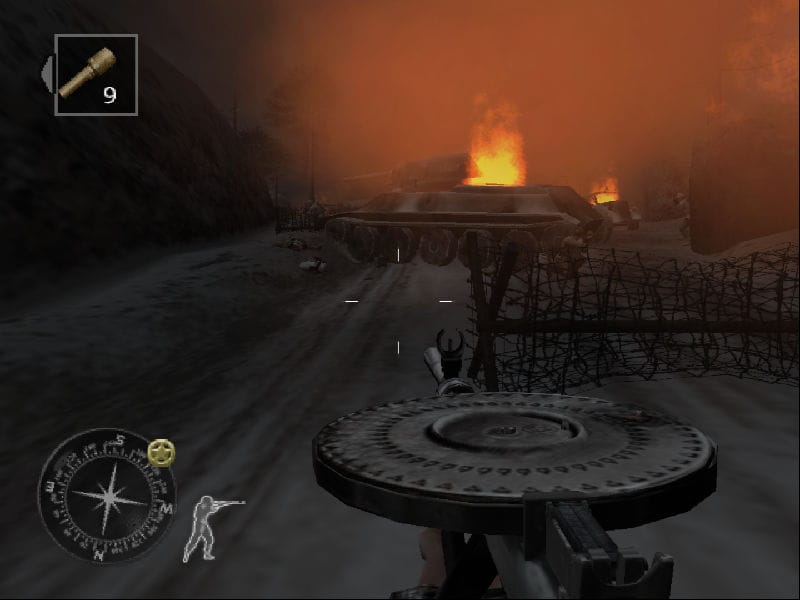
One of the distinguishing features of early Call of Duty titles is in the inclusion of vehicle based levels, and Finest Hour is no exception. You’ll take command of a T-34 tank during the Russian campaign and an M4 Sherman during the American campaign. The British campaign in North Africa features a solitary on-rails shooting segment which has you manning a 50. Cal turret in the back of a moving Jeep. Interestingly I had a bit of an aiming issue in the tank segments. The game allows you to switch between a ‘first-person in-the-tank’ perspective and a ‘third-person outside-the-tank’ viewpoint. This may come down to personal preference, but I tend to heavily favor the 3rd person perspective for these levels as it makes it much easier to determine the orientation of both the tank and the turret since they move independently. Unfortunately I found the aiming reticule in 3rd person to be highly inaccurate. It took me a few tries before I realized that the 1st person aiming was dead on, even at ridiculous distances. So this necessitated (for me) a system that had me constantly switching viewpoints for movement and firing. It eventually became much easier, but it never felt exactly comfortable either.
After all this talk of gameplay, let’s talk about the campaign for a moment. I believe(?) Call of Duty was the first WWII FPS to feature campaign elements for each of the principle allied forces (U.S., Great Britain, and Russia) in the same game with the player assuming the role of many various soldiers. Whereas previous CoD games had culminated with (fairly difficult) final levels occurring during the Russian Campaign, Finest Hour actually begins with the battle for Stalingrad. From there you will assume the role of various Russian soldiers culminating in a protracted armor assault (with those T-34s) on a German airfield as part of Operation Little Saturn. The British campaign takes you to arid Matamata in North Africa where you engage in light infantry commando raids and a daring rescue mission. Finally the U.S. campaign takes you back to the familiar settings of Operation Market Garden where you participate in the capture of the beautiful city of Aachen. Next up you’ll lead an armor assault on the town of Tillet, and the final missions have you capturing the Ludendorff Bridge. Of all these campaigns, the North Africa section is a welcome change of pace. In a sea of WWII FPS, North Africa is still one of the lesser seen/played theaters. The other campaigns are nicely executed, albeit standard fare in this sort of game. Noticeably absent is an Invasion of Normandy segment, so in that regard Finest Hour slightly deviates from the standard WWII FPS playbook (though the Normandy landing is certainly present in other CoD games).
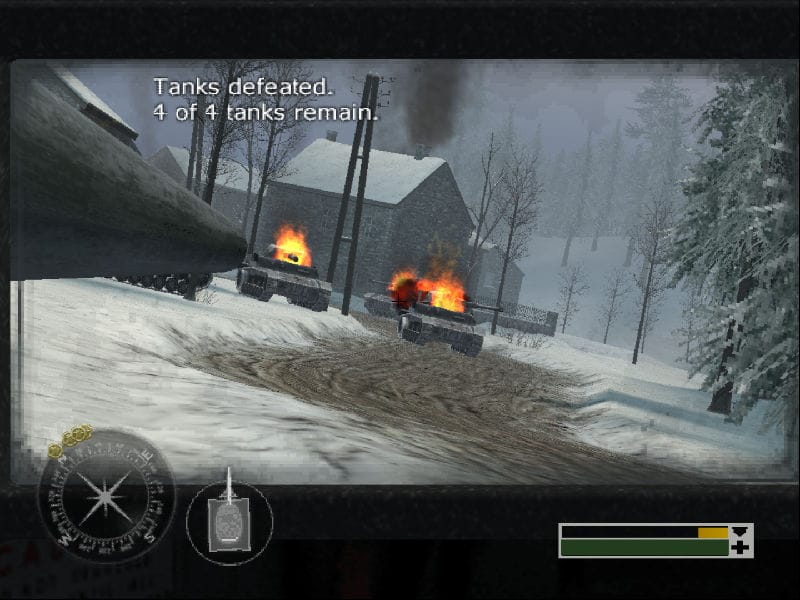

At the end of the day your enjoyment of Call of Duty: Finest Hour will come down to a rudimentary question. Do you (still) enjoy console based WWII FPS? If the answer is yes, you’ll likely find something to enjoy in Finest Hour. If the answer is no, there’s certainly nothing in Finest Hour that will change your mind. This is by-the-books, (pleasantly) flavorless meat and potatoes gaming, nothing more, nothing less.
Leave a Reply